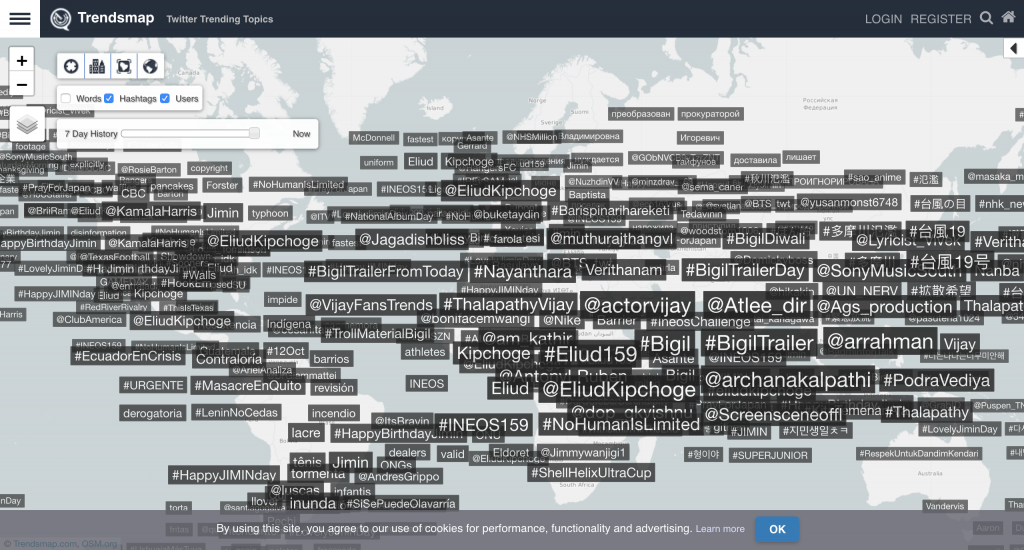I’m not sure if you’ve heard, but something extraordinary happened this weekend. On Saturday, the 12th of October, Eliud Kipchoge became the first person in history to run the marathon distance (42.2KM) in under two hours; clocking a time of 1 hour, 59 minutes, and 42 seconds in Vienna and beating the targeted time of 1 hour, 59 minutes, and 59 seconds. It’s difficult to overstate just what a feat this is – breaking the two-hour marathon time has long been seen as one of the last hurdles in athletics, even as other barriers in the sport have been broken over the years (Roger Bannister’s four-minute mile and Usian Bolt’s 9.58-second 100 metres are the two most notable examples). This isn’t the first time Kipchoge’s had a crack at running the marathon distance in under two hours – the Kenyan had previously attempted to do so as part of Nike’s “#Breaking2” project in 2017, coming tantalisingly close at the Monza race circuit with a time of 2 hours and 25 seconds.
Both the Nike endeavour and this latest attempt, sponsored by petrochemical company Ineos, share a noteworthy feature – they don’t stand as official records as they aren’t recognised by athletics’ governing body, the IAAF. There are several reasons for this, chief amongst them being that the events weren’t open competitions and that they both made use of a rotating team of pacemakers. As such, the official marathon world record – set by Kipchoge in the 2018 Berlin Marathon – still stands at 02:01:39. The man himself, however, insists that setting an official record was never the point of the attempt; across Ineos’ documentary series on the project, he’s repeatedly insisted that what he wants to do is to show that “no human is limited”.
The conditions within which the event was organised left no detail unattended. Naturally, its circumstances were optimised to aid Kipchoge in his attempt to run a sub-two hour marathon; but the “artificiality” of details from the use of pacers and a pace car to the Nike shoes worn by the athletes mean that the cynics and purists will disregard Kipchoge’s achievement. There will also be others who question Ineos’ sponsorship of the event as an attempt to foster good publicity for the company. Indeed, its media team’s relentless use of social media to promote the event – which has Ineos’ name featured prominently – has brought a sort of artificiality to the event, which, in my opinion, is in diametric opposition to Kipchoge the man. In interviews and videos, he comes across as a humble, down-to-earth person, whose steely determination shines through when discussing the possibility of him breaking the two-hour mark.
Of course, one could argue that this persona is a part of the curated image that his team have worked to maintain, which is undoubtedly influenced by the repeated rhetoric of the challenge as an attempt to secure an achievement for all mankind. It’s something that I think Kipchoge does believe – he’s compared to going to the moon – but having followed the challenge’s progress over the past couple of months, the more cynical part of me can’t help but think that the mantra has also been used to reinforce the positive publicity around the event, and by extension, the sponsors affiliated with it (Ineos, Nike, and Dutch sports management company GSC have recurring branding placements throughout the website and documentaries). The very prospect of Kipchoge breaking the sub-two hour barrier in Vienna was the textbook definition of a well-executed publicity stunt, with the Ineos media team was meticulously keeping its social media channels and website up-to-date in the lead-up to the event.
(Besides the aforementioned documentary series, the challenge’s website featured segments like “Eliud’s Diary”, offering an insight look into Kipchoge’s preparations for the challenge; a “Team” section giving an overview of Kipchoge’s personal team and the pacemakers assisting him; they even had merchandise for sale. Third parties also got involved – the official Olympic YouTube channel published a video on Kipchoge’s pursuit of the sub-two goal, and Runner’s World Nederland hosted a watch party for the event.)
However, this isn’t meant to take away from Kipchoge’s achievement at all – I believe that it’ll capture the imagination of the world over for generations to come. 4.3 million people watched Ineos’ livestream of the entire 1:59 challenge, and tens of thousands more tweeted about the event.

I think that it’d take a heart of stone for even the most adherent of purists to not recognise the monumental nature of Kipchoge’s accomplishment, its unofficial status notwithstanding. At a 2:50 per minute pace, or 21 kilometres per hour (you can find all the numbers here), all the marginal gains in the world wouldn’t have made a difference without an athlete as gifted and as mentally resilient as Kipchoge. I may still be slightly cynical about the behind-the-scenes of the challenge, but at the end of the day, I’m embracing the spirit, inspiration, and message that Kipchoge and his triumph have brought to so many people around the world – no human is limited, and “together when we run, we can make this world a beautiful world”.
Extras:
Ineos’ race report on the event;
Wired’s video on the science behind #Breaking2;
People trying to run Kipchoge’s world marathon record pace;
A funny post from Kipchoge’s Instagram account because he honestly seems like such a swell guy.



Great post! I think it really attests to way technology can further push humanity over what used to be set limits none could overcome. That being said, the way it was promoted and managed was also a very typical ( yet it couldn’t be done without the sponsorship and that does com with a price).